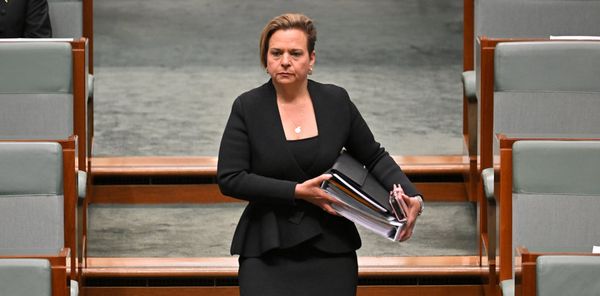
Australian salaries increased at a faster pace in the December quarter in a tight labour market, but not enough to prevent the gap with inflation widening to a record level.
The wage price index (WPI) for the final three months of 2022 came in at 3.3%, an increase on the 3.1% pace in the September quarter and the highest since the end of 2012. Economists had forecast a 3.5% increase.
The increase in wages continued to fall well short of inflation. In the December quarter consumer prices rose 7.8%, indicating a 4.5% retreat in real wages once inflation is deducted. That topped the previous record, set in the September quarter, of 4.2 percentage points.
The Reserve Bank of Australia has said it is monitoring wage increases closely in case a jump in salaries triggers the start of a wage-price inflation spiral. These concerns are likely to abate based on Wednesday’s figures.
Compared with the September quarter, wages rose by 0.8%, seasonally adjusted. Economists had forecast a 1% increase.
Private sector wages rose more than those in the public sector, with the 3.6% annual pace eclipsing a 2.5% rise for those in government jobs.
Private sector wages were up 3.6% in the December quarter from a year earlier, while public sector wages rose only 2.5%, the ABS says. pic.twitter.com/NseLMGykiw
— @phannam@mastodon.green (@p_hannam) February 22, 2023
Those in the private sector continued to enjoy larger wage gains than those in government jobs.
Compared with a year ago, private sector employee wages increased 3.6% while those in the public sector registered only a 2.5% gain, seasonally adjusted.
Private sector wages were up 3.6% in the December quarter from a year earlier, while public sector wages rose only 2.5%, the ABS says. pic.twitter.com/NseLMGykiw
— @phannam@mastodon.green (@p_hannam) February 22, 2023
Those in the accommodation and food services sector had the largest quarterly rise in wages at 1.7%, while those in administrative and support services had the smallest increase at 0.3%.
On an annual basis, those in the wholesale trade fared best with a 4.2% increase. Education and training was the worst-performing sector, recording a 2.4% rise, the Australian Bureau of Statistics said.
The Australian dollar dropped about a third of a US cent against its US counterpart in the wake of the WPI figures. It was recently trading at about 68.3 US cents. Shares halved their losses for the day with the benchmark ASX 200 index down about 0.4% in mid-afternoon trading.
The chief economist at BetaShares, David Bassanese, said the wage figures contrasted with “all the bluster from the Reserve Bank concerning ‘anecdotal reports’ of accelerating wage gains”.
Bassanese said the figures all but rule out a 50 basis point increase when the RBA board meets on 7 March. Prior to today’s figures, investors viewed the chance of a 25 basis point increase in the cash rate to 3.6% as roughly an 80% chance.
Matt Grudnoff, a senior economist at the Australia Institute, said the RBA should recognise the current inflation was not driven by workers’ wages but instead by rising prices and profits from companies such as Woolworths and Coles.
A decade avge earnings were around $56,000 a year.
— Greg Jericho (@GrogsGamut) February 22, 2023
Assuming that wage grew in line with the wage price index, it would now be $69,951 (which is actually around where avge earnings are now)
But in Dec 2012 dollar terms that wage is worth just $54,549 pic.twitter.com/EOeXNN4f7M
“[T]he RBA should stop blaming people who are doing it tough and start addressing the economic reality: profits are driving the cost-of-living and housing crises,” Grudnoff said.
“This data shows fears of a ‘wage-price spiral’ similar to the 1970s are a speculative fantasy. That story is now itself a risk to the Australian economy. Australians are not living in the 70s.”
Gareth Aird, head of Australian economics for CBA, said the RBA should welcome what amounted to “Goldilocks” wage numbers.
“Wages in Australia, as measured by the WPI, are simply tracking exactly where the RBA would like them to settle over the medium term,” Aird said.
“[The] peak tightness in the labour market is now behind us,” he said. Since the September quarter, vacancies and job ads have dropped even as migration has picked up.
Aird noted that WPI including bonuses also slowed from a 3.8% pace in the September quarter to 3.5% in the December quarter. One-off payments made to keep or attract workers could be discarded as the economy slowed.
The CBA expects WPI will peak at 3.8% in the middle of this year, shy of the 4.2% maximum predicted by the RBA. “As such, we expect inflation to subside more quickly than the RBA,” Aird said.







